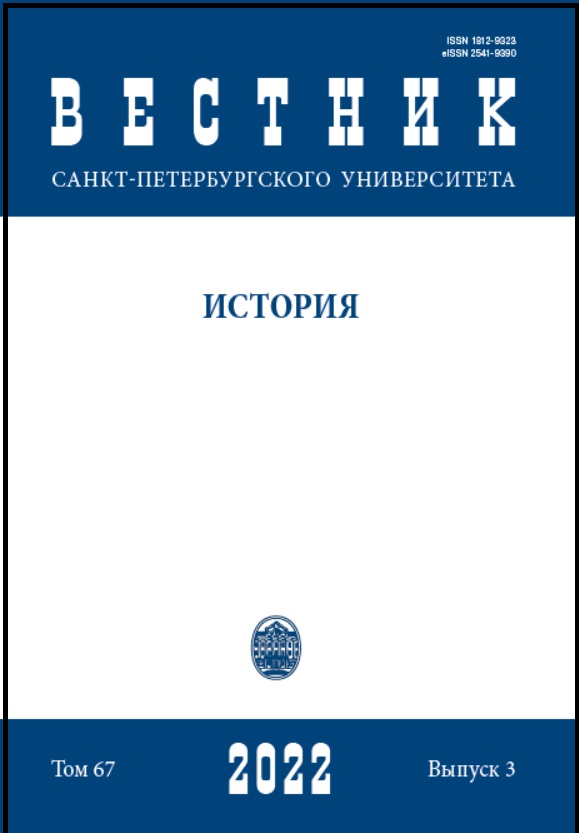Saint Petersburg at the Forefront of Demographic Transition in Russia
DOI:
https://doi.org/10.21638/spbu02.2022.303Abstract
In post-reform Russia, a demographic transition began — a replacement of the traditional type of population reproduction with the modern one. A significant part of the population had rationalized demographic behavior; demographic indicators had improved; the efficiency of population reproduction had increased; intra-family relations had been humanized; and individual birth control had been developed — mainly in cities. The demographic transition began earlier than is commonly thought — among the townspeople of the Saint Petersburg province, where obvious signs of birth control and a decrease in mortality and marriage were already revealed in the first half of the 19th century. The province was in the lead because it was the most urbanized and one of the most cosmopolitan, and Saint Petersburg was the most cosmopolitan city in Russia, which had intensive economic and cultural ties with the West, where demographic transition had already begun at the end of the 18th century in France. In the second half of the 19th century, it spread among the entire urban population, and at the turn of the 19th–20th centuries — among the entire rural population of Russia, but to varying degrees in individual provinces. Demographic indicators had improved because of the progress of medicine and sanitation, the expansion of free medical care, an increase in the cultural level of the population, a change in demographic mentality, and the beginning of birth control, as well as due to an increase in the standard of living of the general population.
Keywords:
demographic transition, Saint Petersburg and Moscow provinces, late Imperial Russia, traditional and modern type of population reproduction, fertility, mortality, nuptiality, improvement of demographic indicators, birth control
Downloads
References
References
Downloads
Published
How to Cite
Issue
Section
License
Articles of "Vestnik of Saint Petersburg University. History" are open access distributed under the terms of the License Agreement with Saint Petersburg State University, which permits to the authors unrestricted distribution and self-archiving free of charge.





